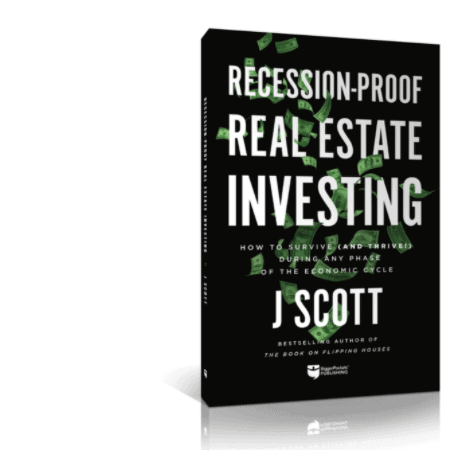When investing in real estate through a 1031 exchange, many investors start with single-family, multifamily, or commercial properties. Each of these property types is a tried-and-true investment option with the potential to produce a substantial return. However, are they able to hold their own when facing a recession or (as we recently experienced) a global pandemic?
During the peak of the Covid-19 pandemic, many property owners and investors found themselves facing a financial disaster. Their tenants (many of who were struggling to keep their businesses operating or earn a paycheck) were suddenly unable to pay their rent. Investors had to learn the hard way what happens when you have all of your eggs in one basket.
You can’t predict when significant events will shift the market or push us into a recession. However, you can diversify your investment portfolio with alternative real estate properties that may better hold their ground during uncertain times. Several alternative assets can offer many of the same benefits as a multifamily property with far less competition. Here are four alternative investments to multifamily properties when completing a 1031 exchange.
Triple-Net Lease Commercial Buildings
Triple-net lease (NNN) properties are generally considered “safe assets” in the investment world. NNN leases are a dependable source of cash flow with a high ROI and passive lease management. Combining the right tenant with a prime location can significantly impact whether your NNN investment remains a good investment during tough times.
Benefits of NNN lease properties:
- More likely to have high-credit tenants that have faired well during past economic highs and lows
- Can be signed with international brands (which often have solid corporate backing)
- Large brands (such as Walmart) have cash flow strategies and access to more significant credit lines (which can protect NNN landlords)
- More likely to have long-term contracts, upwards of 10-25 years in many instances
- Minimal management and maintenance responsibilities are required from the landlord. This means you can have an out-of-state property with little to no property management, maintenance fees, or duties.
NNN leased properties have historically seen less financial loss during recessions. Leasing your NNN property to a business that provides lifestyle and day-to-day necessities (such as large department stores) can further secure your investment. Despite what may happen in the nation’s economy, the demand for everyday essentials such as hygiene and household products will remain intact.
Examples of NNN commercial tenants (more likely to be recession-resistant):
- Drugstores (Walgreens, CVS)
- National and international supermarket chains (Kroger)
- Well-known financial institutions (Wells Fargo, Bank of America)
- National and multi-national casual dining chains (Taco Bell, Starbucks, McDonald’s)
- Self-storage facilities
Medical Offices
Healthcare is the fastest-growing industry in the nation. No matter what is going on in the world, there will always be a demand for medical services. Because of their consistent public demand, assets such as primary care clinics, hospice facilities, nursing homes, and urgent care facilities are a few examples of excellent recession-resistant alternatives to multifamily properties.
Healthcare service properties have the potential to provide investors with long-term rent (even in a downturn in the market) because of their reliable cash flow and access to substantial lines of credit.
Benefits of medical office buildings:
- More likely to have access to high-credit limits
- Long-term tenants can attract other medical tenants that want to be near complimentary services
- The medical field is an essential industry that has remained stable during economic downturns
- Historically low turnover rates
- Rent from medical properties often provides more significant returns
- Medical office building for 1031 exchange can also offer numerous tax benefits
- Equity appreciation over time
With the rise of urgent care and other non-hospital health centers, it’s unlikely these medical properties would see substantial loss even during another pandemic or recession.
Examples of medical office buildings:
- Skilled nursing facility
- Hospice care
- Primary care physician’s office
- Bariatric and wellness center
- Dentistry
- Urgent care facility
- Rehabilitation center
- Birthing Center
Find an Agent in Minutes
Match with an investor-friendly real estate agent who can help you find, analyze, and close your next deal.
- Streamline your search.
- Tap into a trusted network.
- Leverage market and strategy expertise.
Single-Tenant Flex Industrial
You may have heard the term “flex” brought up in conversations about commercial real estate. A flex industrial property (flexible property) is a hybrid of office and industrial space such as storage or a warehouse.
Flex industrial properties can be single buildings standing alone or located in an “industrial park.”
Benefits of flex industrial space:
- Tenants have their own private offices, bathrooms, and private walkways, allowing people to social distance during a pandemic.
- Tenants have private access with the ability to control who comes in and out of their space.
- Affordable expansion. Long-term tenants may outgrow the space and need to expand the office or warehouse space. This is relatively easy to do with flex industrial properties due to the reduced improvement costs compared to office products.
- Flex assets provide affordable and customizable leasing options for cost-conscious office users.
- Diverse tenant mix. Flex assets have tenants that range from national to local businesses.
- Triple net (NNN) leases are standard with flex industrial properties. This allows the landlord to pass the tax, insurance, and common area maintenance expenses onto the tenant.
Flex industrial properties offer tenants space for their office, warehouse, and manufacturing needs, all under one roof. The versatility of these spaces attracts a wide variety of businesses. Many of which can provide consumers remote services and enough space for workers to socially distance.
Examples of flex industrial tenants:
- Construction companies
- Manufacturing facility
- E-commerce
- Medical and logistical distribution
- Wholesale distribution
- Telecommunications/Technology
- Utility
Commercial Retail Centers
Knowing the different commercial retail asset types and the most recession-resistant tenant mix for each space can help you determine the risk and cash flow for savvier real estate investment. During COVID-19, commercial retail centers anchored with major grocery and/or lifestyle tenants did surprisingly well. Many investors feared commercial retail centers would flop, but the recent pandemic showed grocery-anchored retail centers were quite resilient.
Benefits of commercial retail centers:
- Typically anchored with major national tenants
- Are heavy on specialty retail, grocery and apparel
- Have diverse tenants that cater to a wide variety of shoppers
- Depending on the location, retail centers can be a popular tourist spot
- Due to the variety and anchor tenants, commercial retail centers usually see stable cash flow with high ROI
- Can be NNN leases and often have long-term tenants with up to 10-25 year leases
- In some situations, the landlord may not be liable for property taxes
- Commercial retail centers offer convenience and lifestyle services that typically stay in demand despite economic distress
Again, I wouldn’t say any property or business is completely resistant to economic distress, but there are certain qualities to look for when investing in alternative assets. When investing in commercial retail centers, make sure to carefully select your tenants. Do they provide goods and services that people can’t live without? Are your anchor tenants considered essential? Are they able to offer curbside, delivery, or other pandemic-safe services?
Examples of commercial retail centers:
- Lifestyle centers
- Factory outlets
- Power centers
- Community centers
- Neighborhood centers
- Convenience centers
- Mixed-use retail
Conclusion
As with any investment, there are factors to consider, such as location, accessibility & the creditworthiness of potential tenants. Any building won’t necessarily be a winner. When building your portfolio to be safe from economic downturns, you’ll want to consider key factors such as risk, yield, and cash flow. Diversifying your investments is also crucial to reduce loss during an economic decline. The above alternative assets have historically performed well through all stages of the economic cycle and are excellent alternative assets to multifamily when completing a 1031 exchange.

Prepare for a market shift
Modify your investing tactics—not only to survive an economic downturn, but to also thrive! Take any recession in stride and never be intimidated by a market shift again with Recession-Proof Real Estate Investing.
Note By BiggerPockets: These are opinions written by the author and do not necessarily represent the opinions of BiggerPockets.

